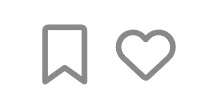Use this page to search and browse 2,000 comments and questions from listeners like you—and answers from Nick—going back 10 years!
- Our users describe lessons and ask questions based on specific pains or conditions or activities, making this page great for when you can't find what you're looking for with our regular Lesson Search & Filter.
- It's a simple search. Spell carefully, use shorter or different permutations of the word, etc. For example, searching "dizz" catches dizziness and dizzy.
- Click on the red links below to go right to the comment in context.
Post your own questions on any of our lessons or courses! General questions are best on our FAQ.


May 21, 2025
May 20, 2025
May 20, 2025
May 19, 2025
May 19, 2025
May 18, 2025
May 15, 2025
May 14, 2025
May 13, 2025
May 12, 2025
May 12, 2025
May 12, 2025
May 11, 2025
May 9, 2025
May 8, 2025
May 8, 2025
May 8, 2025
May 8, 2025
May 6, 2025
April 30, 2025
April 29, 2025
April 29, 2025
April 28, 2025
April 27, 2025
April 23, 2025
April 22, 2025
April 20, 2025
April 19, 2025
April 19, 2025
April 17, 2025
April 17, 2025
April 17, 2025
April 17, 2025
April 16, 2025
April 15, 2025
April 13, 2025
April 12, 2025
April 12, 2025
April 10, 2025
April 10, 2025